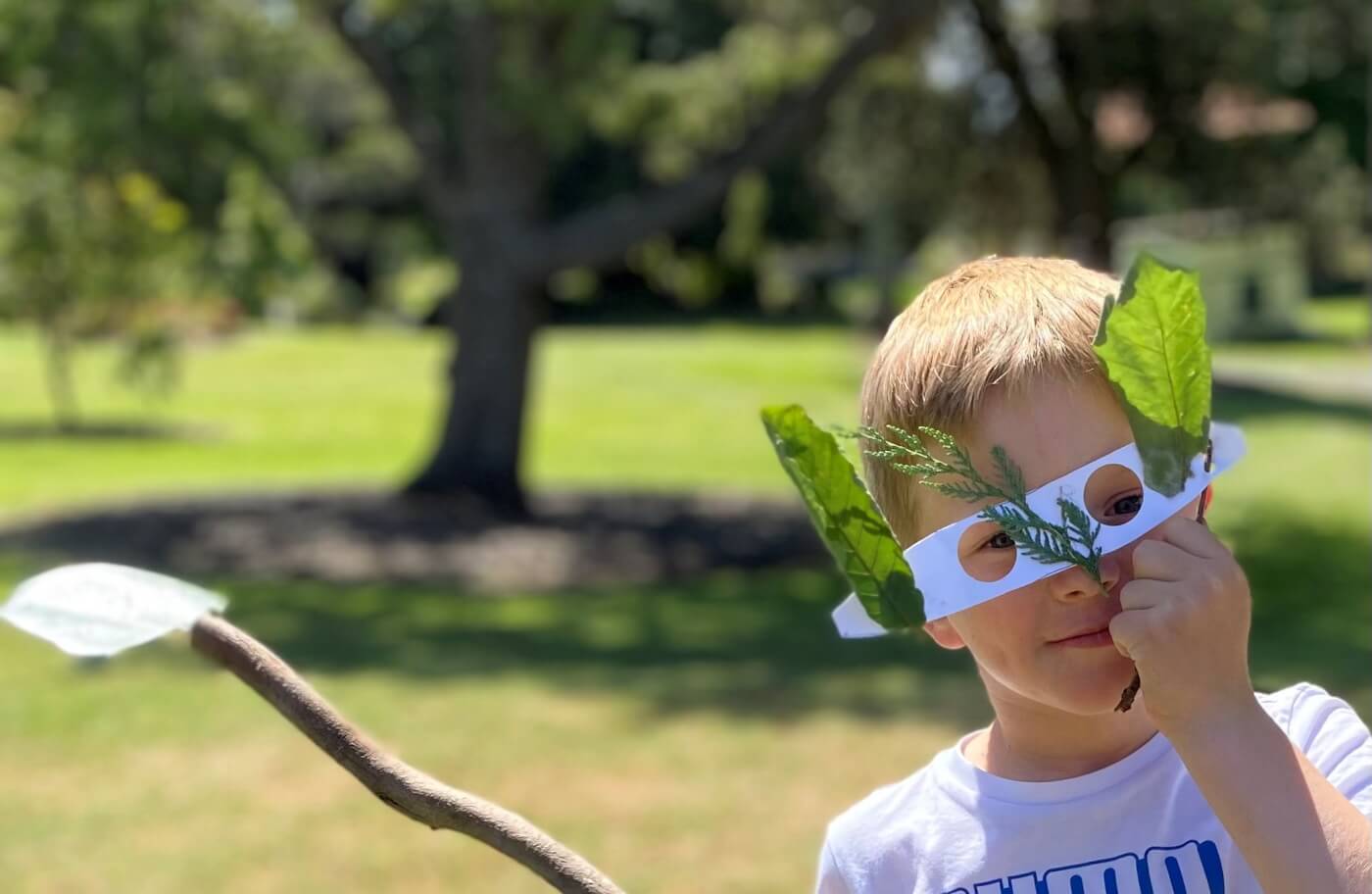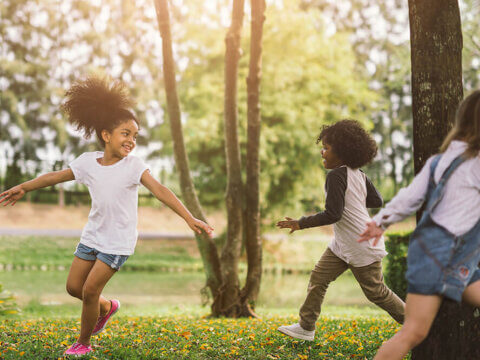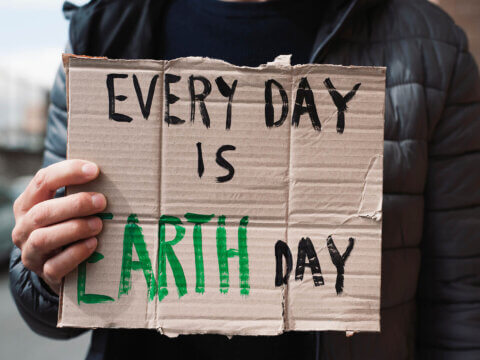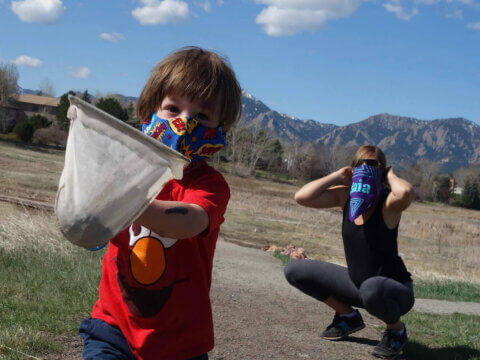I CAN do this! — Helping our youngest community members make Earth Day every day
As we approach another Earth Day, it’s a great time to teach kids about the importance of caring for our planet – and to get them actively participating in environmental stewardship activities.
The first Earth Day was held in the United States on April 22nd, 1970, to highlight and honor the achievements of the environmental movement. Sprouting from roots of protest and activism, Earth Day has become an annual worldwide celebration and a day of advocacy and action, emphasizing the importance of preserving Earth’s natural resources for future generations.
In homes, classrooms and communities around the world, we celebrate all things Earth Day – but is one day really enough?
As the saying goes, “A puppy is not just for Christmas…”
Rather than a singular instance, Earth Day is a call to action for us to advocate for the earth all year round – to make Earth Day, every day. But how do you do that when you’re just a kid? And how do you know that your actions are actually making a difference for the planet?
The messaging around climate change and environmental issues is loud and pervasive – and our youngest are listening. Over the past 12 years, I’ve been working with children, parents and educators to facilitate outdoor play and nature-inspired learning programs in early childhood settings, schools and communities around the world. Through my work, I’ve noticed more and more frequently that children feel concerned and helpless about the “state of the environment.” Although they’re often too young to fully understand the complexities of our climate crisis, children are aware of its gravity.
Yet the issue can sometimes feel too BIG and overwhelming for children to feel they are capable of making a meaningful impact. I’ve noticed that this is especially true for young children who may not have the freedom to explore outdoors or who might not have easy access to green spaces near their homes. It’s easy to feel disconnected from environmental issues, especially if children perceive the biggest problems as distant and unrelated to their immediate surroundings.
They’re often left thinking (and worrying), “What difference can I really make?”
Environmental educator, researcher and author, David Sobel said, “If we want children to flourish, to become truly empowered, then let us allow them to love the earth before we ask them to save it.”
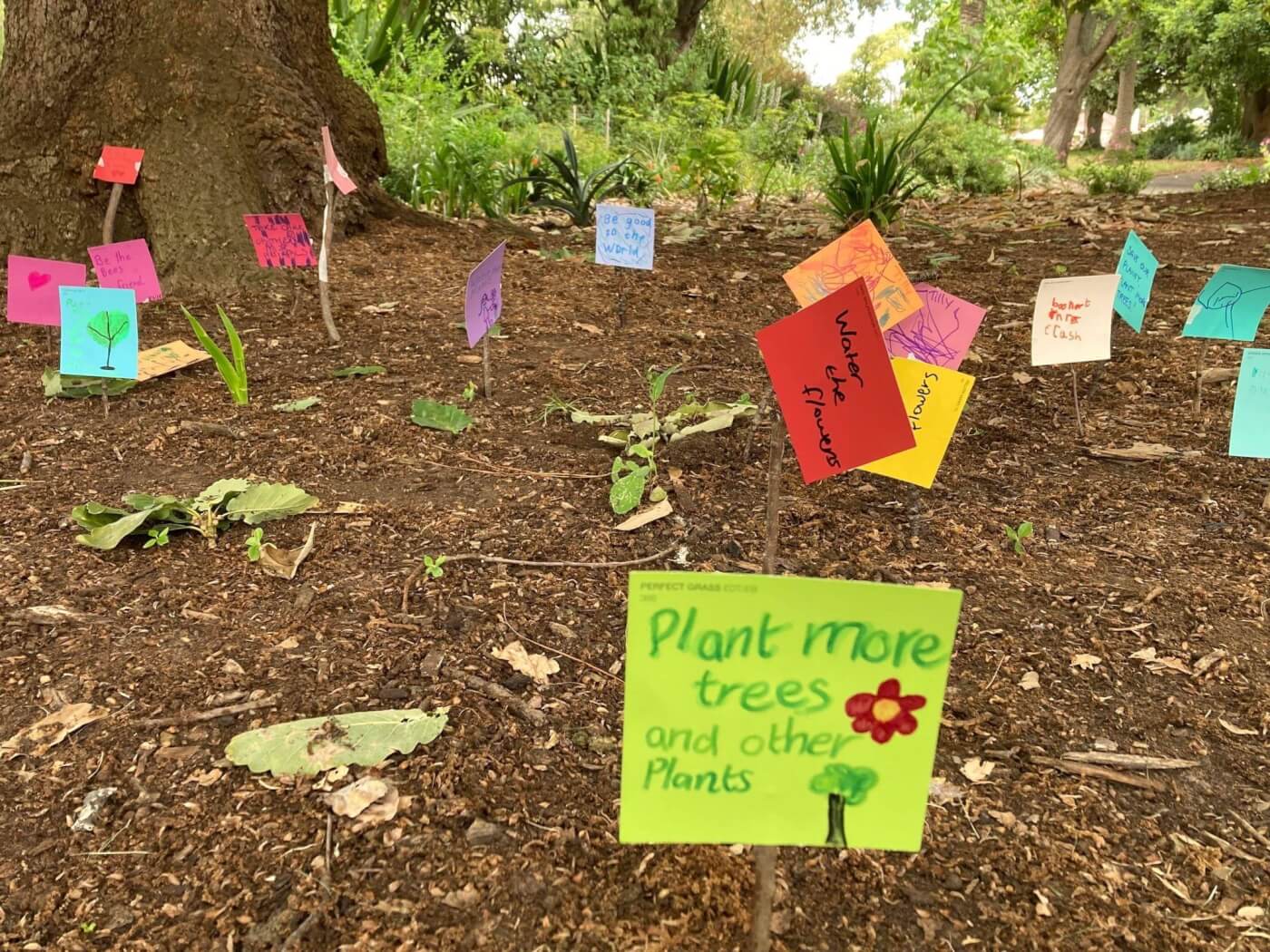
Positive messages of hope for the planet written by children on handmade signs. Photo courtesy of Tania Moloney.
By opening the door for all children to play, explore, discover, wonder and connect deeply with nature as often as possible, they have the opportunity to nurture lasting connections with the natural world, growing a sense of stewardship for the earth.
Sobel also said, “Children who have the opportunity to shape their own small worlds during childhood will grow up knowing and feeling that they can participate in shaping the big world.”
Providing children with opportunities to care for nearby nature helps them recognize their ability to create positive change. For example, you can help your children learn about the pollinators that are native to where you live and create a habitat garden for them – then watch as bees flock to your flowers! Children can create a small container garden with native plants that can be placed on a front step or balcony if they don’t have access to a backyard. Perhaps you can make a little fairy garden inside the pot too! A windowsill vegetable garden is another great way to nurture children’s green thumbs, while also encouraging healthy eating and an understanding of where their food comes from.
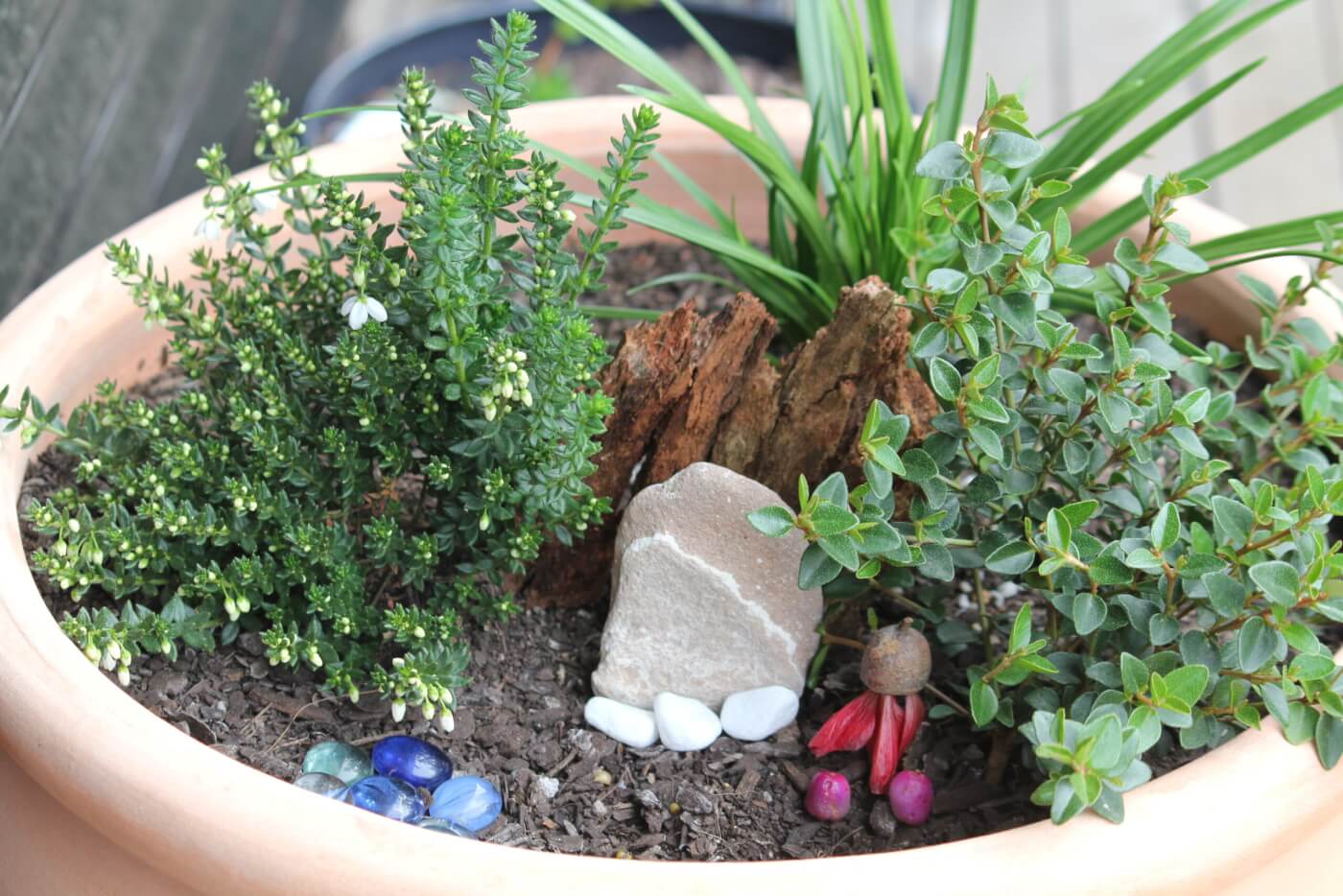
Get creative by making a bee and “fairy-friendly” container garden using native plants. Photo courtesy of Tania Moloney.
Connecting children to the world right outside their back door helps them understand that they CAN make a difference for the nature that they know and love.
The nature that they can touch, smell, hear, see, notice and experience in their own small worlds.
The nature that they can directly shape and have an impact on.
These seemingly small, achievable actions allow children to experience success in their environmental stewardship and develop a sense of agency. Their narrative then shifts from “What difference can I really make?” to “I CAN do this!”
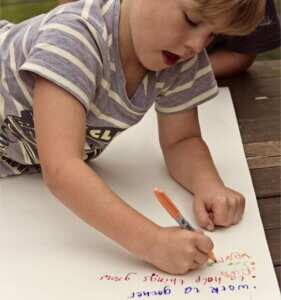
A young boy writes his list of “can do’s” to care for and connect with nature. Photo courtesy of Tania Moloney.
I CAN plant a seed (or a whole garden!).
I CAN care for the bees.
I CAN save water.
I CAN recycle.
I CAN show others how I care for the planet.
I CAN make MY difference.
I CAN do this!
Developing an “I CAN DO this” mentality is important so that kids feel hopeful – not helpless – about the future of our environment and the positive role they play in it. As they build their sense of agency and see the impact of their actions, they begin to realize that their voices matter and that they can inspire others to take action to care for nature too. Their confidence and narrative expand…
“I CAN do this… and YOU CAN too.”
Their impact – and their small world – grows. They begin to understand that when each one of us cares for nature where we live, and in ways that are achievable for us, then our collaborative actions can make a big difference for the planet.
Children’s worlds expand even further when we take them beyond the backyard to see what others are doing to care for the planet. Perhaps you and the children you love take a trip to visit your local nature reserve to talk with the staff about their important work and how you can help. Or, you might get involved in a community garden project or volunteer with a group in your area that regularly conducts conservation activities.
As Dr. Jane Goodall said in her conversation with Richard Louv during the Children & Nature Network’s 2022 Inside-Out International Conference, “Act locally, and then you dare to think globally.”
By building a sense of agency through local action and then introducing young children to broader environmental efforts and initiatives, we can help them understand the interconnectedness of their actions and inspire global hope.
Then “I CAN” and “YOU CAN” become “WE CAN.”
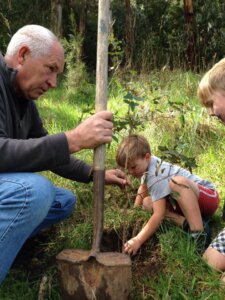
A grandfather planting a tree with his two grandchildren. Photo courtesy of Tania Moloney.
This “WE CAN do this” mentality is essential, because it helps children feel supported by a global community that cares deeply for nature. They realize that together, WE CAN shape the “big world” – as Sobel called it.
WE CAN plant trees at our local nature reserve.
WE CAN grow vegetables in our garden.
WE CAN green our schoolyard.
WE CAN help the native wildlife.
WE CAN make wise purchasing decisions.
WE CAN do this… together!
By encouraging children to take one small, green step at a time to care for nature in their own backyards, balconies, classrooms and communities, they see and experience first-hand that their actions CAN and DO make a difference. And they can feel hopeful, knowing that the actions they take on Earth Day are something they – and all of us – CAN DO, every day of the year, in all of the small and big worlds we live in.
Earth Day: Young leaders advocate for change, a Finding Nature News story
Ecological Grief and Hope in a Changing World, a Finding Nature News story
Nature Engagement during the Early Childhood Years, an annotated bibliography of recent academic literature from 2015 to 2021
Outdoors for All: Access to Nature is a Human Right, a Richard Louv piece
-
Network News
POLICY UPDATE: Policy and advocacy for the children and nature movement
-
Voices
Binoculars, bald eagles and my journey as a Black birder
-
Richard Louv
THE WONDER BOWL: Ten Spring and Summer Nature Activities for Kids and Adults
-
Network News
Minneapolis Spotlight: The promise and possibilities of parks for youth
-
Voices
Why nature is my motherhood ally


